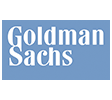How to Avoid Broker Manipulation, Such as Stop-Hunting
Some traders worry that brokers manipulate trades, especially through stop-hunting. What is stop-hunting?Some traders worry that brokers manipulate trades, especially through stop-hunting. What is stop-hunting? Stop-hunting happens when the market briefly moves to trigger stop-loss orders before reversing.
So, how do you protect yourself in these cases? Here’s how you do it:
1. Choose a Trusted Broker: Not all brokers engage in manipulation. Look for a well-regulated broker like FXCG that follows strict financial rules and offers fair trading conditions.
2. Use a Wider Stop-Loss: If your stop-loss is too tight, small price movements can take you out of a trade before the market moves in your favor. Give your trades room to breathe while still managing risk properly.
3. Avoid Obvious Price Levels: Big traders know that many people set stop-losses at round numbers (like 1.3000 or 1.2500). Instead, place your stop-loss slightly beyond these points to reduce the chances of being stopped out.
4. Trade During High Liquidity Hours: When the market is less active, prices can move unpredictably. Trading during high-volume hours, such as during London or New York sessions, helps reduce random price spikes.
5. Monitor Your Broker’s Spreads: Some brokers widen their spreads unexpectedly, causing your stop-loss to trigger early. Watch your broker’s spreads, especially during news events.
6. Use a Virtual Stop-Loss: Instead of setting a visible stop-loss, you can track it mentally or use an alert system. This way, the broker cannot see your stop-loss and target it.
7. Keep Records and Compare Prices: Track your trades and compare price charts from different sources. If you notice unusual price movements only on your broker’s platform, it could be manipulation.
By following these steps, you can reduce the risk of stop-hunting and trade with more confidence. At FXCG, we ensure a fair trading environment, giving you the best chance to succeed.
before: How to Accurately Predict Market Movements Using Technical and Fundamental Analysis


















